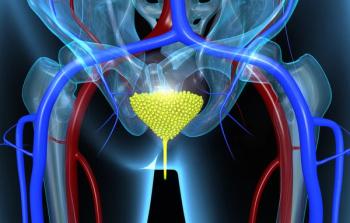
Non-Urothelial Bladder Cancer Often Upstaged During Surgery
Patients with non-urothelial bladder cancer are more commonly upstaged during surgery compared with urothelial cancers.
Patients with non-urothelial bladder cancer are more commonly upstaged during surgery compared with urothelial cancers, according to a new study. The upstaging carries with it an increased mortality risk, suggesting non-urothelial cancers should be considered targets for aggressive early treatment.
“Non-urothelial histologic variants are purported to have a worse prognosis than urothelial, but exact estimates of morbidity and mortality are limited because of their low incidence,” wrote study authors led by Andrew J. Cohen, MD, of the University of Chicago. Disease upstaging has been linked with poor outcomes, but little was previously known about upstaging in non-urothelial variants.
The new study analyzed staging and outcomes among 15,386 patients diagnosed from 2000 to 2010 and included in the National Cancer Data Base; there were 13,442 urothelial cases, 789 patients with squamous histology, 124 with small-cell bladder cancer, 789 with adenocarcinoma, and 499 with other types. The results of the analysis were
Patients with any non-urothelial histology were more likely to be African American, to be treated at academic medical centers, and to be younger (P < .05 for all). The 5-year survival rate for urothelial carcinoma was 45.2%, compared with 41.3% in non-urothelial variants (P < .001).
Upstaging at the time of surgery was more frequent in non-urothelial bladder cancer, occurring in 55.4% of those presenting with clinical T1 or less, compared with 42.7% in urothelial disease. Independent of stage, the 5-year survival rate for upstaged patients was 32.4% in non-urothelial cases and 46% for those who were not upstaged (P < .001). Those with non–muscle-invasive squamous cell disease had the highest rate of upstaging at 61.76%; those with muscle-invasive adenocarcinoma had the lowest rate, at 35.2%.
A multivariate analysis showed that T upstaging in patients with non-urothelial histology and non–muscle-invasive disease was associated with worse overall survival even after adjustment for a variety of factors (hazard ratio, 2.20 [95% CI, 1.46–3.30]; P < .001).
“Overall survival of non-urothelial subtypes is worse than urothelial at 5 years, but patients with non-urothelial cancer may simply be diagnosed at a higher stage,” the researchers wrote. “Aggressive treatment with radical cystectomy should be strongly considered for non-urothelial cancers with non–muscle-invasive disease.”
Newsletter
Stay up to date on recent advances in the multidisciplinary approach to cancer.























































































